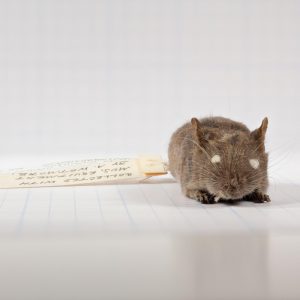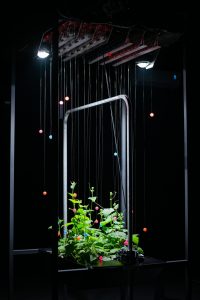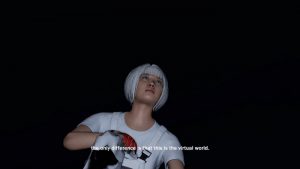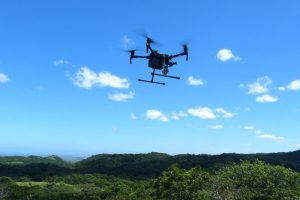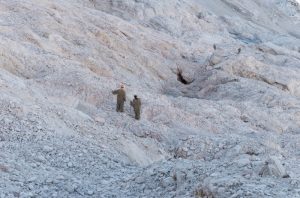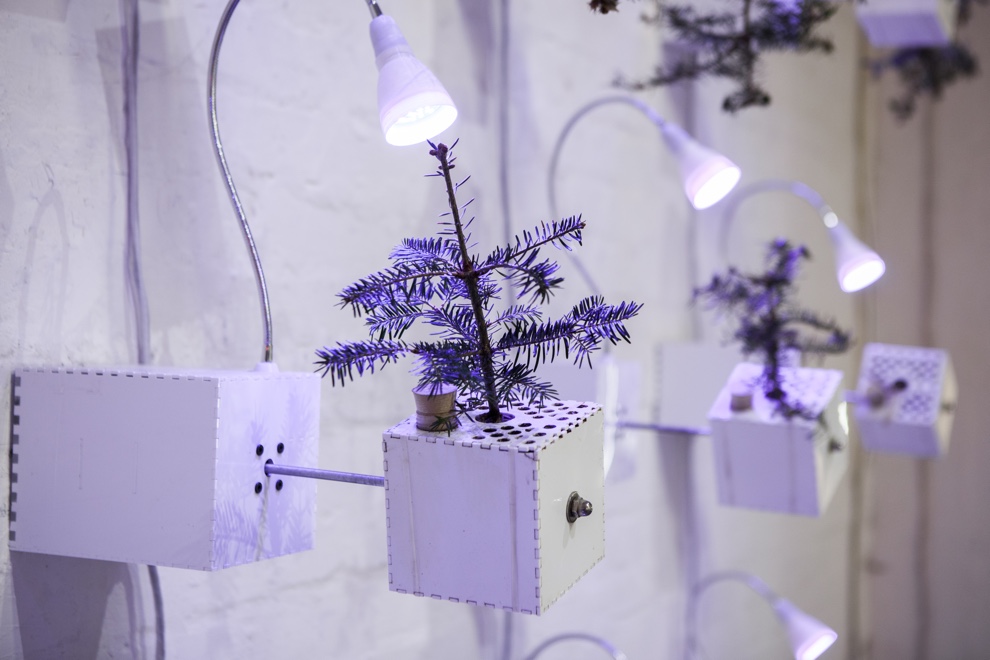
Laura Beloff and Jonas Jørgensen, The Condition, 2016. Photo by Anna Autio
The Condition might look like a standard (media) art installation but don’t let its playful appearance fool you. The deeper you dig, the more you realize how many thought-provoking ideas and issues the work raises: new forms of ‘natural selection’ where it’s the prettiest -not the fittest- that survives, novel ecology in which salmons and tulips are grown à la carte, intersection between the design of biological organisms, aesthetical criteria and capitalistic values.
The Condition consists of a grid of 12 little Christmas trees in white pots. They swirl gently according to an algorithm that translates online space weather data as rotation speeds onto the grid of the boxes. To complicate things even more, some of the trees are cloned trees from Denmark, others are wild Finnish trees. The rotation boxes hung on the wall recall the clinostat, a device designed to negate the effects of gravitational pull on plant growth and development. This installation setup explores how Christmas trees are able to cope in changing environments. Not all thrive equally. Some of the plants are fine, some seem to suffer, some have recovered, others haven’t. Which suggests that even artificial organisms placed in a very artificial setting are subject to some kind of natural selection.
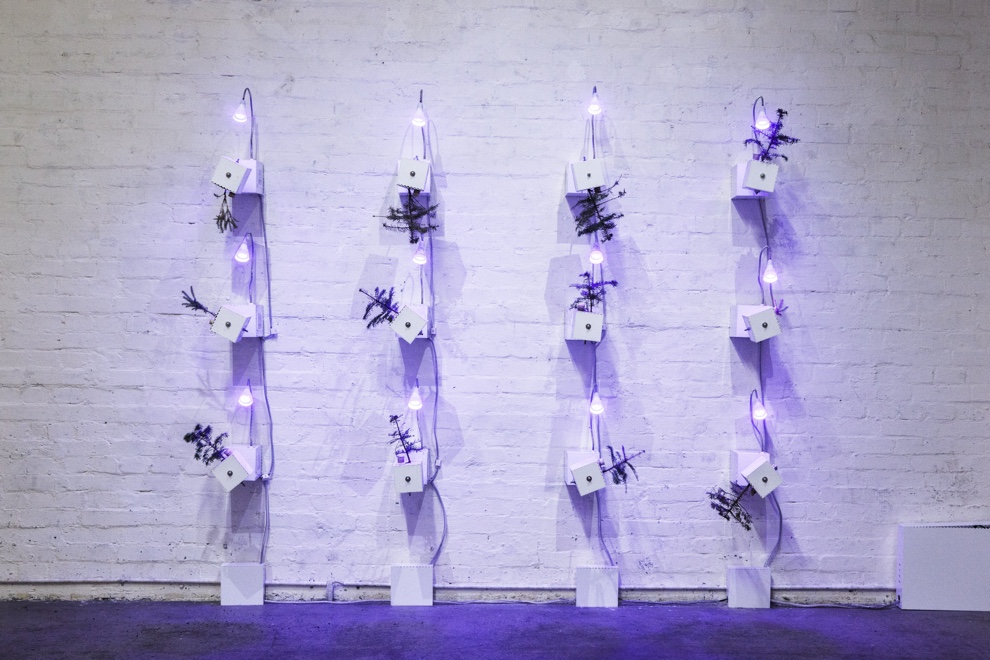
Laura Beloff and Jonas Jørgensen, The Condition, 2016. Photo by Anna Autio
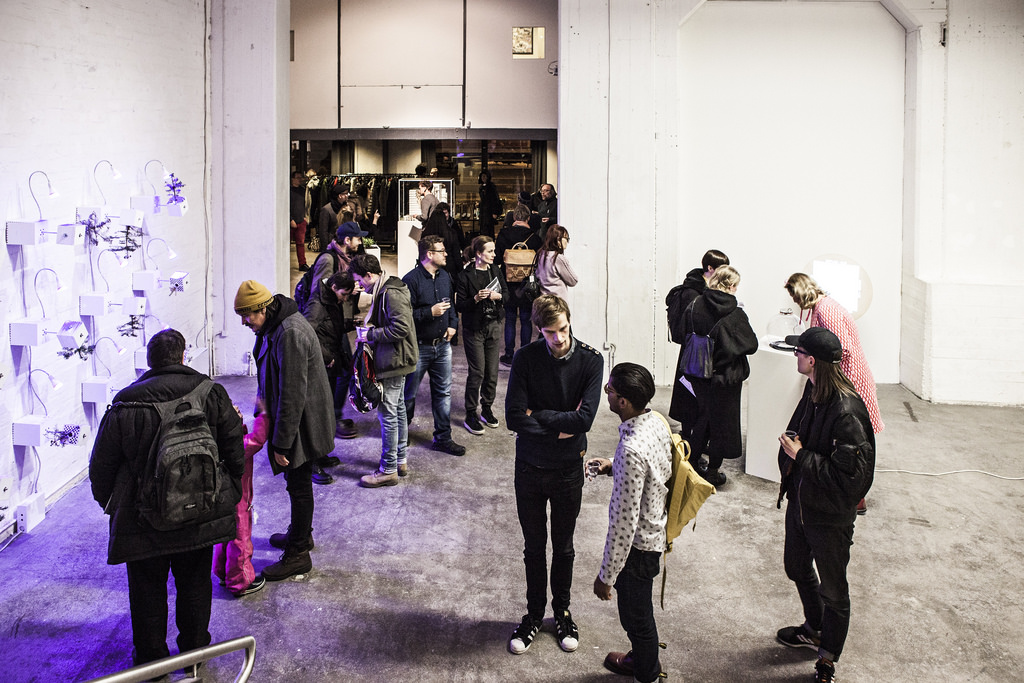
Laura Beloff and Jonas Jørgensen, The Condition, 2016. Opening of the HYBRID MATTERs exhibition. Photo by Anna Autio
The tree used in The Condition is the Nordmann fir. This coniferous tree is not only the most popular Christmas tree in Europe, but also a complex postnatural organism in which organic matter, cultural meaning and the technological coexist.
The typical Christmas tree is a species that is far natural than we might think. If you live in Europe, chances are that your Christmas tree comes from Denmark (where it was originally imported from Caucasius.) Christmas trees are a highly successful business there. The country produces 10 million trees per year (that’s almost twice the population of Denmark), 90% of which are exported to other European countries. But if you leave things in the hands of nature, you end up with a number of trees that are not pretty enough to decorate your living room in December so scientists at Copenhagen University’s Tissue Culture Lab are cloning it, using somatic embryogenesis, a new method where plants are produced from single cells without sexual reproduction. The aim of the research and experiments is to produce ‘perfect trees’ that are grown in the fields of the country before being exported all over Europe. These trees are designed and replicated to match the customers’ wishes.
“Christmas-trees are like humans, they come in all shapes and sizes,” Christmas tree producer Bernt Johan Collet explained to Euronews. “But a supplier wants symmetric trees, because you don`t want to throw away half of them. The French want a little tree, like this one. The Dutch and the Danish want a tree with some space between the branches. Because they can put the decorations in between.”
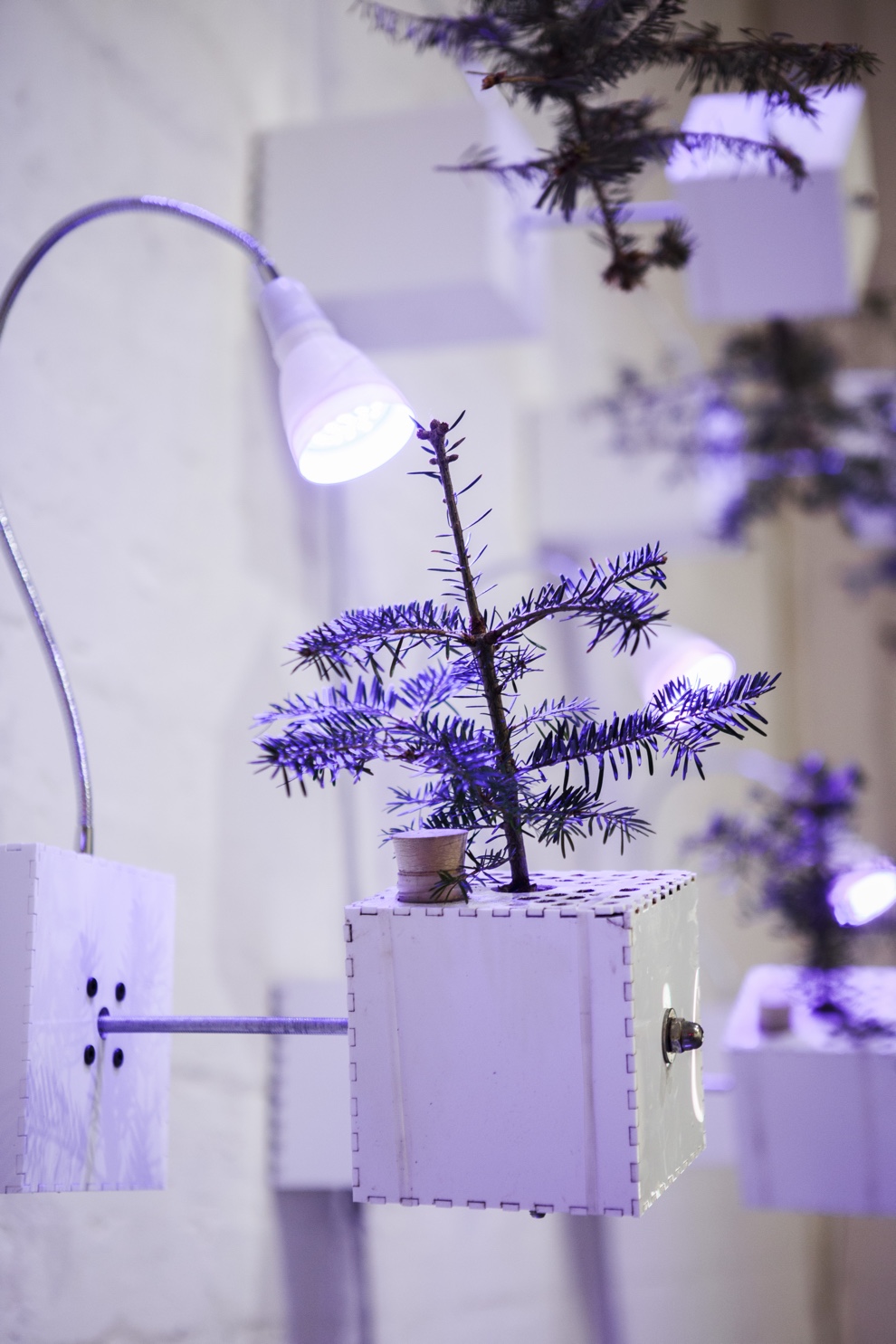
Laura Beloff and Jonas Jørgensen, The Condition, 2016. Photo by Anna Autio
With their irreverent use of the Christmas tree, artist Laura Beloff and historian Jonas Jørgensen are probing questions such as: What kind of life forms will survive with us or without us in other kinds of conditions than what we currently have on planet Earth? What kind of conditions and organisms are forming at the intersection of technological and biological evolution and human agency?
By exposing the mini forest to changing conditions, the work investigates whether or not Christmas trees can survive in changing environmental conditions; on a different planet, on a polluted place, in closer symbiosis with technology or in an environment that has experienced drastic changes. Besides if the survival and evolution of a plant is determined by Western cultural values and aesthetic preferences, what happens if this cultural basis disappears?
Check out Laura Beloff’s presentation (it starts at minute 27, then comes back minute 49 and and then at 1 hour 10 minutes but i would highly recommend you listen to the other speakers as well) in which she put The Condition into the context of her own research on postnatural organisms and ‘survival of the prettiest’:
HYBRID MATTERs Symposium Panel II. Plant subjectivities, assemblies and assemblages, with Kira O’Reilly, Laura Beloff, Jens Hauser, Monika Bakke. 25 November 2016 at the University of the Arts in Helsinki
(more info in the PDF of the paper.)
The work was part of the HYBRID MATTERs exhibition that closed a few days ago at Forum Box in Helsinki. The show was part of the HYBRID MATTERs Nordic art&science network program which investigates the convergence of our environment with technology and essentially the intentional and unintentional transformation of our planet through human activity. The program took the form of a series of researches, encounters, art commissions, exhibitions and a symposium. I got the chance to attend the symposium and to visit the final exhibition. More episodes about the whole event will be on your desk starting tomorrow!
Previously: HYBRID MATTERs: The urks lurking beneath our feet.

